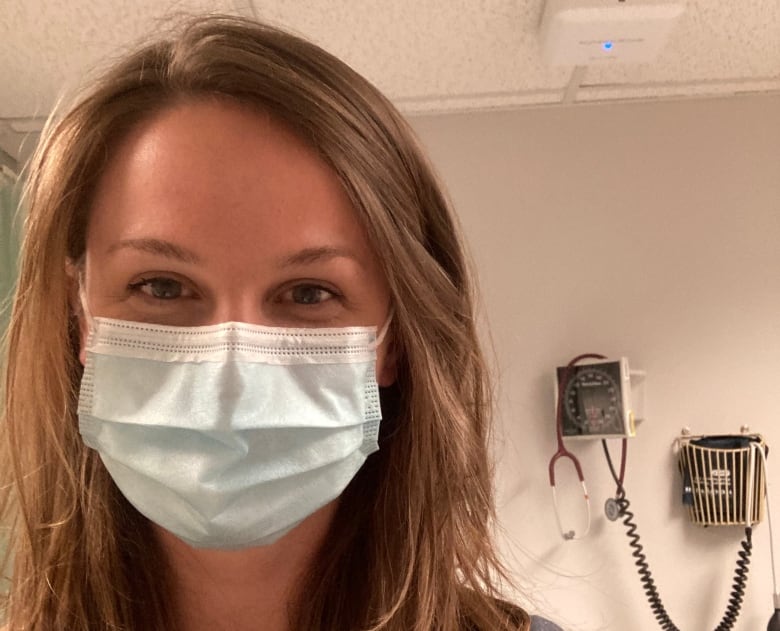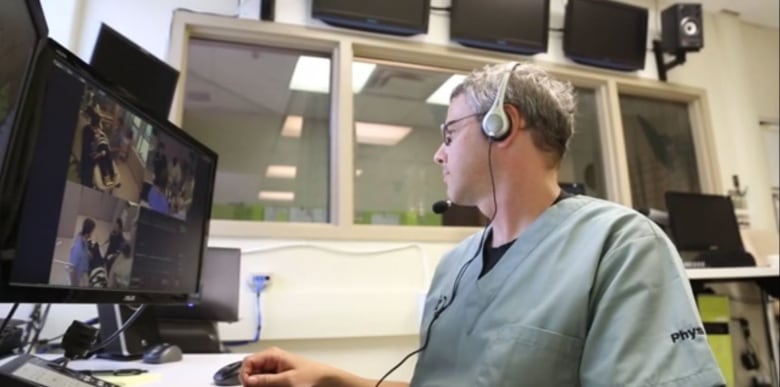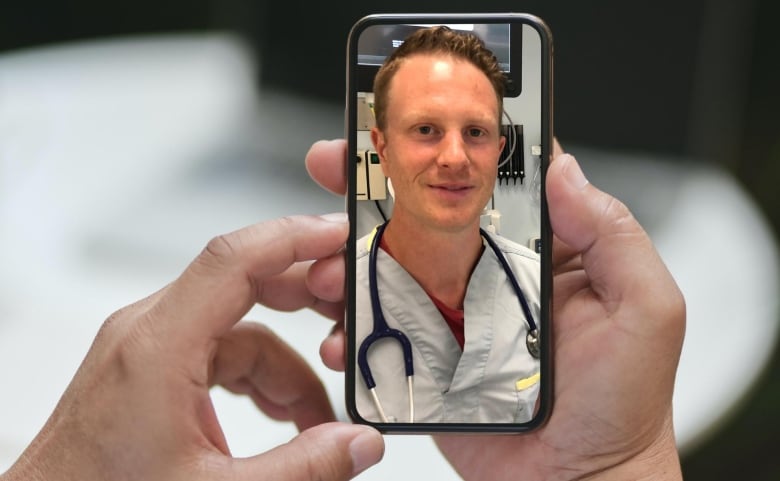When a woman in labour came to the emergency centre in a remote B.C. community, Dr. Mary Koziol needed help.
She was early in her career and doesn’t specialize in obstetrics, so Koziol called a peer support line to speak with an on-call maternity specialist. The peer physician walked her through all the different scenarios and stayed on the video call during the birth to provide guidance.
“It could have left me feeling bad about myself as a doctor, or like I shouldn’t be providing care in rural communities. Instead, it was a really empowering experience and reminded me that even though I’m not going to have all the skills and experiences that a rural community sometimes demands of you, that I can get that from elsewhere,” Koziol said.
Peer-to-peer support lines in B.C. and Ontario are vital for rural emergency physicians, doctors say.

They say with many remote or rural communities facing staffing shortages that, in some cases, are leading to temporary emergency department closures, knowing that peer support is available can help retain doctors.
“I think these kinds of programs are critical,” said Dr. Daniel Howes, a professor of emergency medicine and critical care at Queen’s University.
In B.C., the support program is taking it one step further, with doctors filling overnight vacancies in emergency departments that would otherwise close for a few hours.
“If a group like ours can just come in and do the weekends, that does a lot for doctors actually wanting to stay in that community. I think it also does a lot for recruitment,” said Dr. Brydon Blacklaws, an emergency physician in Powell River, B.C., and co-lead of the Real-Time Virtual Support (RTVS) program.
How it works
In her 20 years as an emergency physician, Dr. Kylie Booth says no shift goes by without her talking to a peer about a patient.
She says brainstorming with peers “is absolutely indispensable to your confidence, to your interest in coming back another day to do what is a very difficult job.”
So when the COVID-19 pandemic sparked wider use of video calls, Booth seized the opportunity to start a peer-to-peer support line for emergency department physicians working in rural settings in Ontario.
She knows the need is high, as many rural doctors are doing it all, with fewer resources at their disposal.
“Not only might they be the only doctor in the emergency department, they are likely the only doctor in the hospital proper. So they are wearing lots of hats,” she added.
With the Ontario peer-to-peer support program, doctors in 27 remote hospitals are able to call and get the thoughts of a colleague who isn’t attending to their own patients or running their own ER, Booth said. They’re only taking calls from the support line.
“We have one physician on for 12 hours and the breadth of cases has been quite remarkable,” she said.
She says there have been calls about severe cases, but many of the phone calls have been for help with patient management when resources are limited.
“These physicians that are working in rural or remote sites are the best of the best,” Booth said.
“What they’re calling for is that second set of eyes on a case, a second set of hands at the bedside to allow them to make the next best choice for the patient to bring that high-quality care right to the patient’s bedside.”
It’s still early days for Ontario’s peer-to-peer physician support program. The pilot launched in October and currently has funding until the end of March. Booth hopes funding continues.
She says iterations of a peer-to-peer support program have tried to launch in Ontario before.

Howes knows that all too well. He and his colleagues launched a pilot peer-to-peer support program about a decade ago.
They wired security cameras — similar to those found in casinos at the time — in five emergency rooms to connect with rural doctors around Kingston, Ont. The pilot ended after six months when funding dried up and physicians volunteering their time struggled to take on shifts, Howes said.
But there’s still a need to help rural physicians, he said.
“These kinds of programs are going to be essential if we’re going to continue with the same sort of model of distributed emergency care in our country,” he said.
“The work that these folks do in these centres is often just as acute and the crises are just as significant.”
Can it help with retention?
Handling those crises in rural settings with fewer resources does take its toll on the health-care providers working in these emergency centres.
A 2021 survey by the Canadian Medical Association found that doctors who practice in small towns or in isolated and remote areas “are significantly more likely to be experiencing burnout than those in urban/suburban areas.”
Doctors and others have said that rural emergency rooms are bearing the brunt of the health care shortages.
The B.C. support line, known as the Rural Urgent Doctors in-aid (RUDi) program, has seen that demand on health care providers in rural, remote or First Nations communities through the increase in the number of calls to the service.
When the program first launched in 2020, Blacklaws says there were a handful of calls every few weeks. Now the doctor on-call gets on average 34 calls during a 12-hour shift.
The calls can range in severity, which means sometimes those calling the line will have to wait, he says.
“We’re not perfect by any stretch, but we are trying and we are improving,” he added.
Since its launch, the B.C. program has expanded to include phone numbers for on-call pediatrics and maternity and newborn specialists. Other specialists like those who specialize in dermatology or neurology are also available during the week on short notice.
WATCH | Doctors Manitoba president says more to do to ‘woo’ doctors to rural, northern communities:
Doctors Manitoba president Dr. Candace Bradshaw outlines ways the province could do more to support physicians already working in the system and attract more to choose Manitoba.
Keeping doctors from burning out and leaving the community is a huge part of what the peer support programs in both provinces are striving for.
“This program doesn’t mint new practitioners. But if we can support the ones that are already in the field then that would be excellent to keep them coming back to emerg because there’s certainly other ways to practice medicine. And if we lose those folks in emerg, that problem obviously gets exacerbated,” Booth said.

In B.C., Blacklaws says the team also sometimes supports smaller medical centres with virtual backfill overnight as needed, so the doctor in the community has a chance to rest.
As a result, doctors through the program have also helped to prevent about 1,800 hours of diversion (when patients arriving by ambulance are sent to another hospital) since 2021.
Blacklaws says there has been some criticism of the virtual backfill, as some have said it’s best to have a doctor in-person. He emphasizes that the doctor in the community is called in when there’s a severe case.
“If we can give that doctor some rest, I think the patients in that community really do benefit because they’re going to get a doctor that’s less likely to burn out … and have more energy for their community and their practice in the morning,” he said.
Howes says these peer-to-peer support lines could benefit doctors in other parts of Canada, too.
“It really benefits everybody. It’s good for the patient because you get two heads instead of one and you get more resources, which is fantastic,” he said.
Koziol says knowing she can get a colleague’s second opinion in a matter of minutes has convinced her to take shifts in smaller areas over the years.
“Within my first few years of practice, I’m not sure if I would have taken all of the rural locums that I had if I hadn’t known that was available to me,” she said.
“It was really a bit of a security blanket.”














Leave a comment